314-Pound Yellowfin Tuna / Ada Foah, Ghana
In May 2003, Candace Meyer landed this massive yellowfin tuna off the coast of Ada Foah, Ghana. The 314-pounder is the largest yellowfin catch ever by a female angler, according to IGFA records. Meyer caught the fish on 130-pound tackle and landed the fish in 45 minutes. Will two decades pass before this record is surpassed?
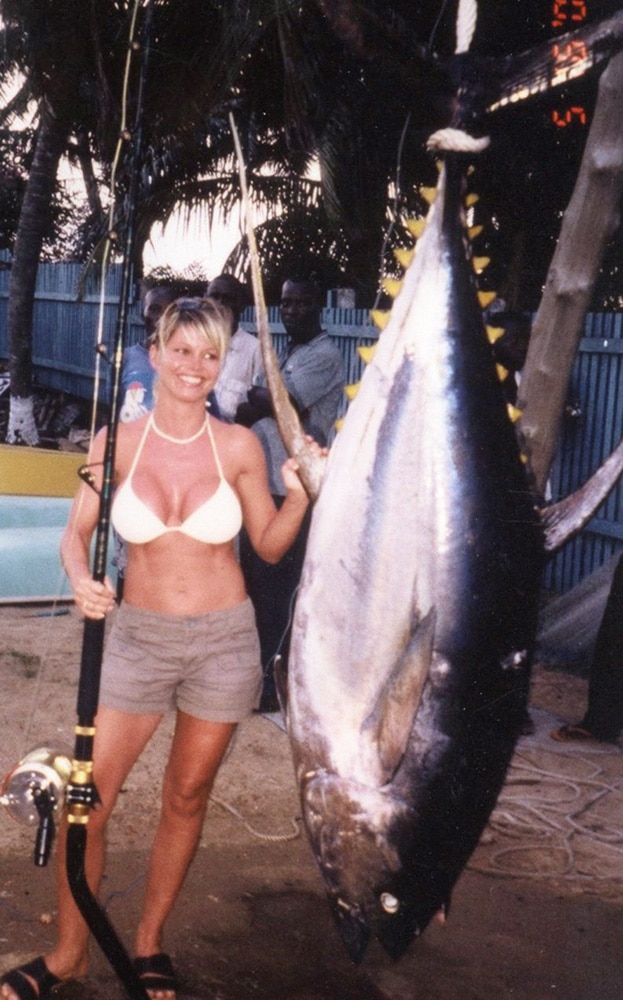
427-Pound Yellowfin Tuna / Cabo San Lucas, Mexico
It’s one thing to catch a world-record tuna, but what if you won $1 million because of it? That’s the case for Guy Yocom, the newest all-tackle record holder for yellowfin tuna. His catch weighed 427 pounds at the scales. Yocom caught the monster tuna in September 2012 on a 12/0 Demon Perfect Circle Hook while chunking some 100 miles south of Cabo San Lucas, Mexico, aboard his boat, El Suertudo (Spanish for, you guessed it, “The Lucky One”). Read about his million-dollar catch, thanks to Mustad Hooks.
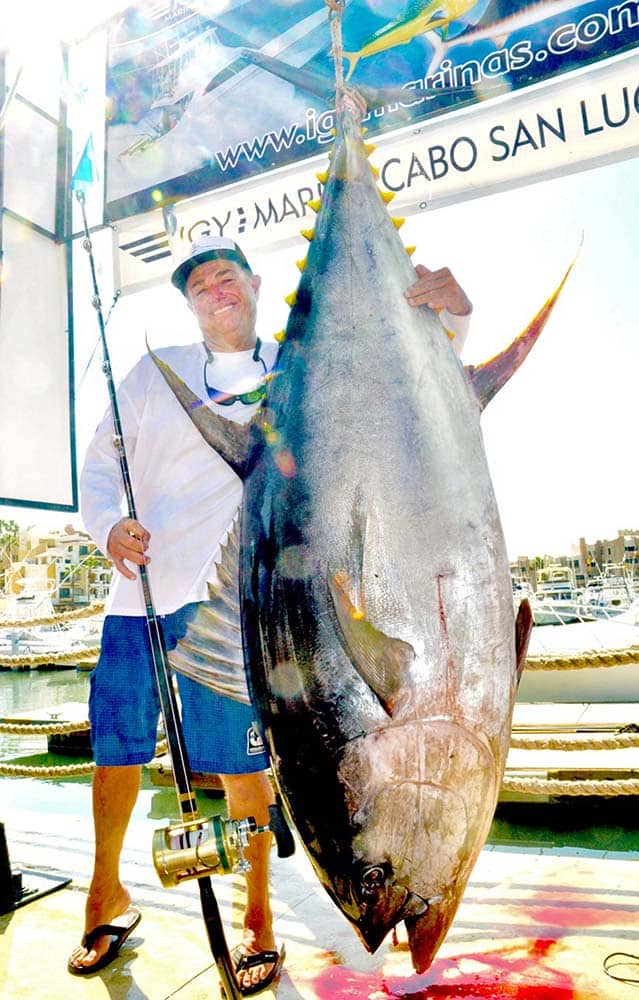
107-Pound Yellowfin Tuna / Cape Town, South Africa
Trevor Hansen’s 107-pound tuna is the largest yellowfin tuna ever caught on fly. Fishing off Cape Town, South Africa, Hansen landed the fish using 20-pound tippet and a sardine fly. In total, the fight lasted 4 hours and 45 minutes. We can only guess the fight was worth it — look at the smile on his tired face!

62-Pound Yellowfin Tuna / Challenger Bank, Bermuda
Dylis Pantry went light to land her 62-pound yellowfin tuna. Using just 8-pound tackle, she landed the line-class record off Challenger Bank, near Bermuda. Anyone who fishes for tuna regularly knows their affinity for deep-water seamounts, often called banks. Off Baja Mexico, there’s Hurricane and Gordo banks. Panama has world-famous Hannibal Bank. Even the northeast United States has popular areas like Stellwagen Bank. When it comes to seamounts, you can bank on tuna.

445-Pound Yellowfin Tuna / Hurricane Bank (San Diego)
John Petruescu rightfully claims the record of the largest yellowfin ever caught by an angler on rod and reel. He was fishing on the San Diego long-range boat Excel when the fish hit at Hurricane Bank. Petruescu used a live skipjack tuna to land the 445-pounder. Unfortunately, the catch is not eligible for an IGFA record. A deckhand helped maneuver Petruescu’s rod around a bow anchor line; International Game Fish Association rules prohibit anyone but the angler from touching the rod at any time during a fight.

385-Pound, 12-Ounce Yellowfin Tuna / Lome, Togo
The West African Coast has some of the largest yellowfin tuna that nobody has ever fished. If you’re willing to make the trek, the rewards are worth it. Philippe Marn landed his 385-pound, 12-ounce yellowfin off the coast of Lome, Togo. He used a Rapala plug on 50-pound tackle to hook the tuna, landing the fish in 1 hour and 45 minutes.
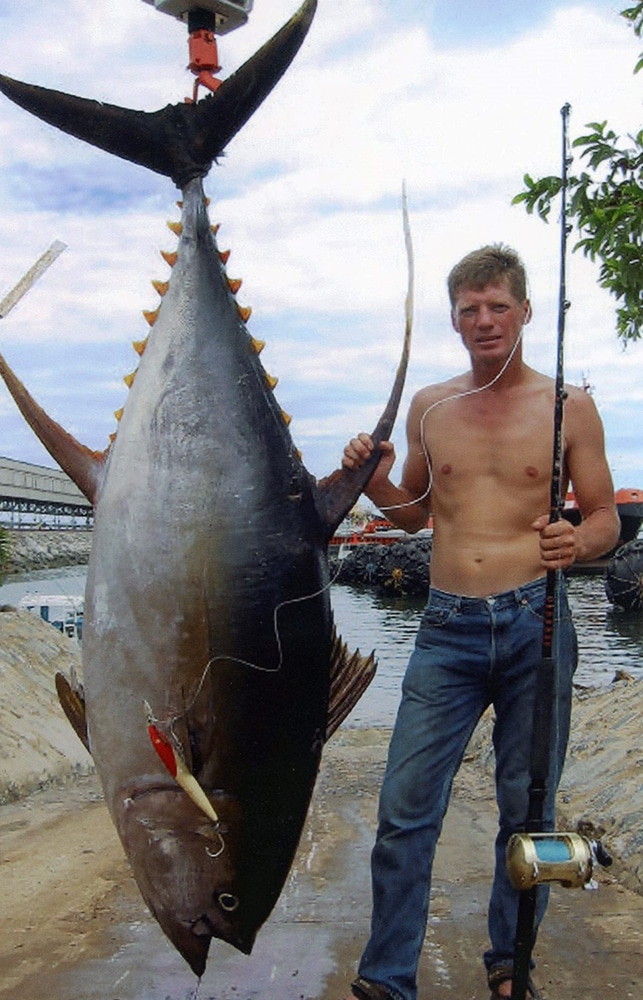
256-Pound Yellowfin Tuna / Kona, Hawaii
Evangeline Komo’s 50-pound-class record tuna, weighing 256 pounds, is the largest U.S.-caught yellowfin tuna in the record books. That’s not to say that her yellowfin is the biggest ever caught off the United States; instead, it’s stood the test of time. Her yellowfin tuna, landed in August 1979, came from Kona, Hawaii. She landed the impressive fish in just 20 minutes.
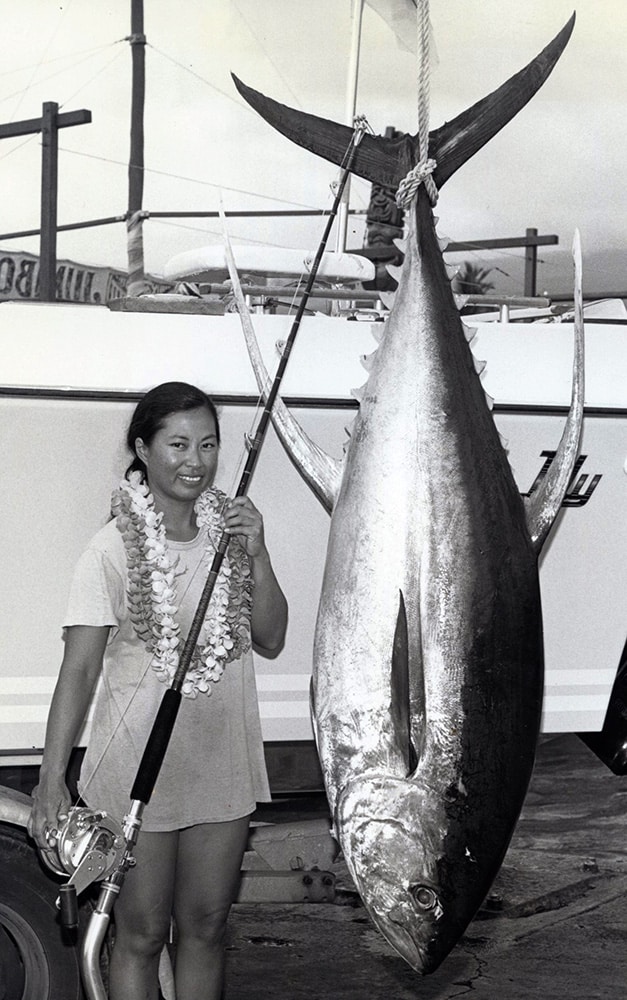
2-Pound, 8-Ounce Yellowfin Tuna / Hawaii
Acha Lord landed this 2-pound, 8-ounce yellowfin tuna off Hawaii using 4-pound tippet. Her catch is the smallest IGFA yellowfin record on the books. The tuna attacked a Pink Petras fly. A record is a record, no matter the size!
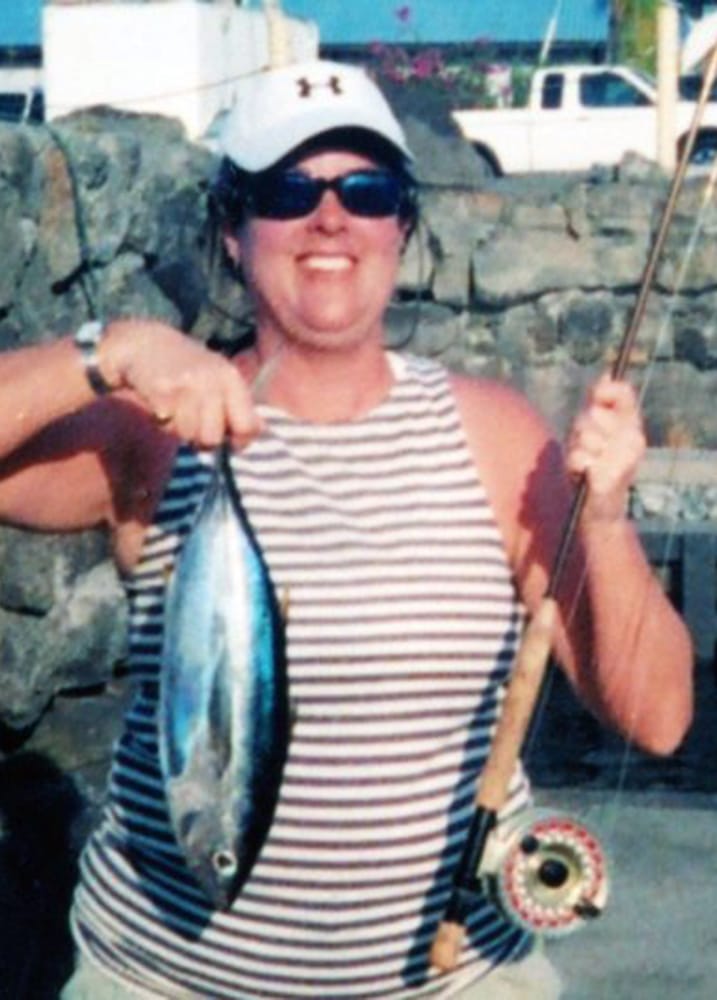
133-Pound Yellowfin Tuna / Kona, Hawaii
Janet Bekins Martic looks so debonair next to her 133-pound yellowfin tuna. But her catch landed her in the IGFA record books. Using 16-pound-class tackle, she used a skipjack to entice the yellowfin tuna off Kona, Hawaii. Hawaii, is one of the top yellowfin tuna fisheries in the United States.
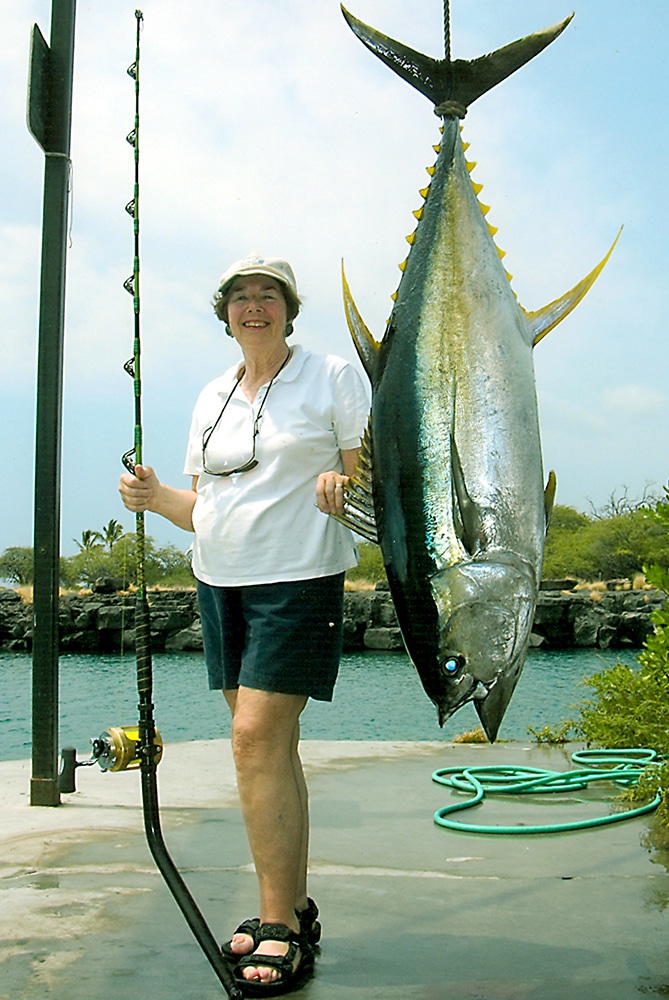
388-Pound Yellowfin Tuna / Isla San Benedicto, Mexico
The 1970s featured some of best yellowfin tuna old-school anglers can remember — and the records show it. Curt Weisenhutter landed this 388-pound yellowfin tuna off the coast of Isla San Benedicto, Mexico. San Benedicto is an uninhabited island, and third largest island of the Revillagigedo Islands. The Islands make up a biosphere that was closed to all fishing 2002. The closure was meant to prevent destructive commercial fishing, but recreational sport fishing was also thrown in. Commercial operators still exploit the area because a lack of enforcement by the Mexican government.









